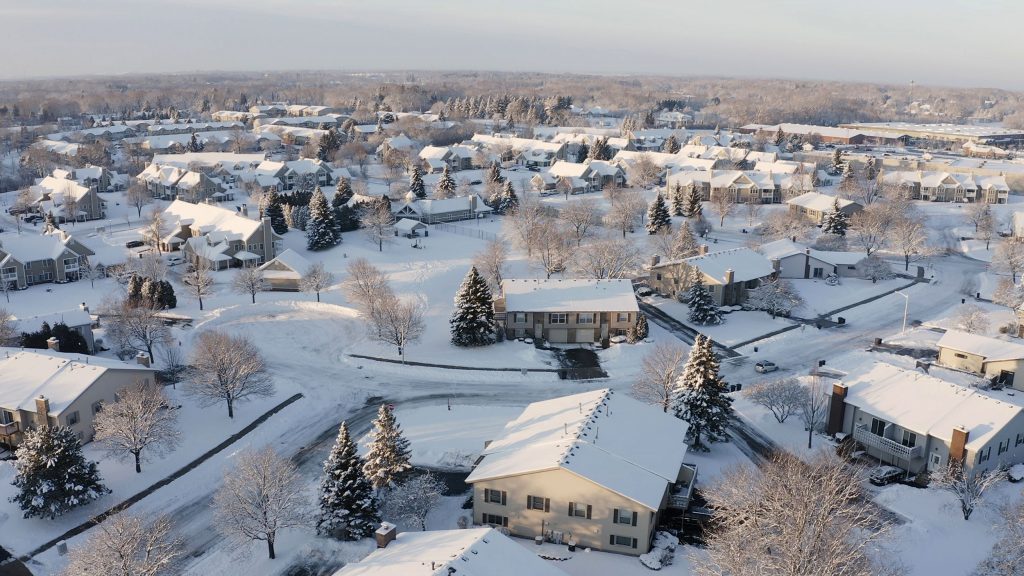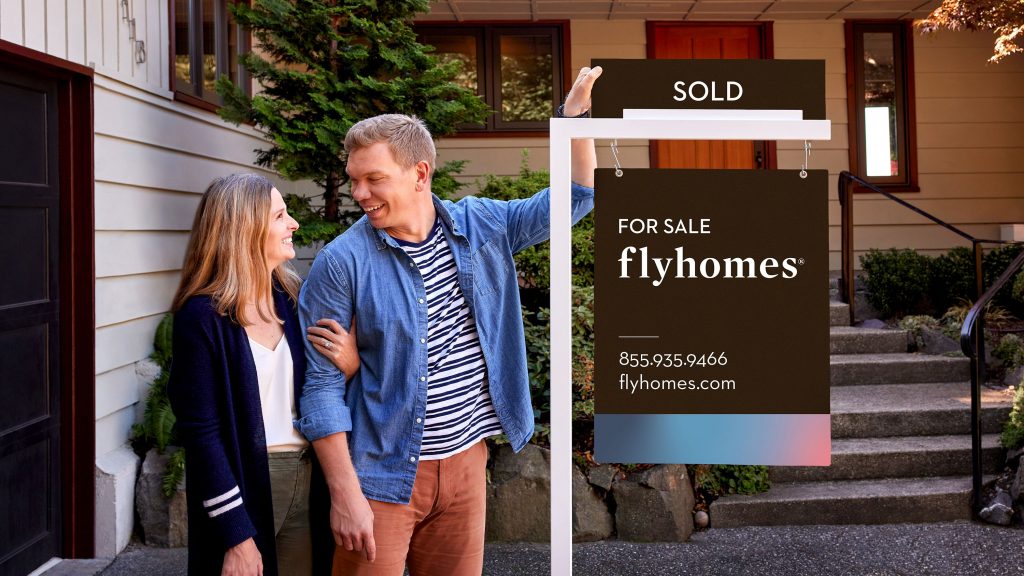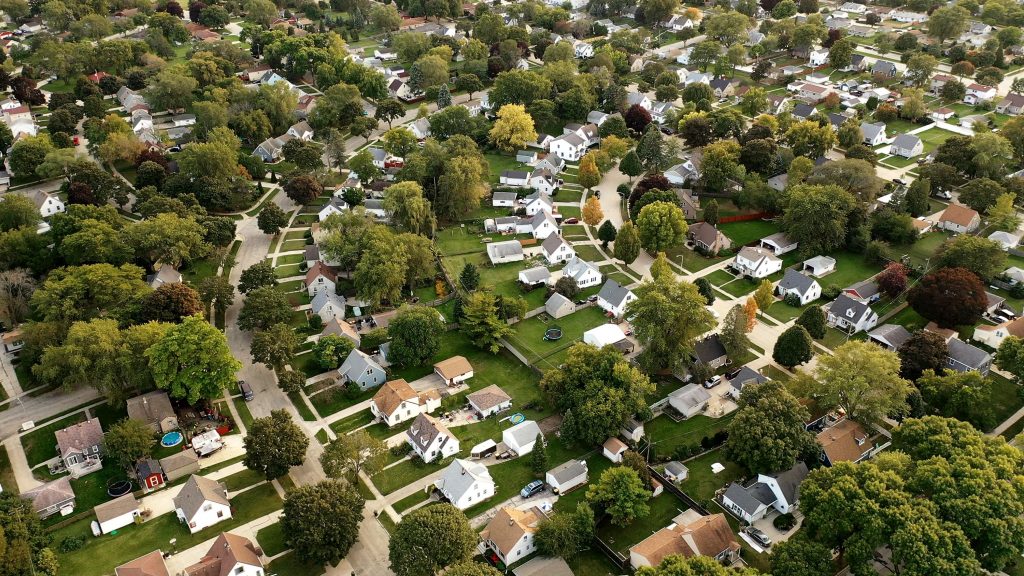A Complete Guide to Traditional Style Houses
Alongside the stress of buying a home, there are many fun parts that should be relished. One of which is imagining yourself and your family in different houses, experimenting with what suits you best.
Many people are drawn to traditional-style houses, which are classic and elegant without forsaking functionality. If you’re considering one of these timeless homes for yourself but aren’t quite sure what they offer, here’s everything you need to know about traditional-style houses.
What is a traditional-style house?
Traditional-style houses have a classic architectural style, with most including characteristics of homes from the 17th and 18th centuries. Some later periods might be mixed in there too.
A traditional-style home could be a period house, a modern house that faithfully references a single era, or a modern house that draws inspiration from multiple eras. In the US, the neoclassical, colonial, and farmhouse styles are particularly prevalent. Design themes are often mixed – for example, using colonial-style columns in a Mediterranean-style home.
Paying homage to classic architecture while offering modern convenience, practicality, and comfort is what makes traditional-style houses so popular. They’re one of the easiest styles of house to adapt or renovate too, offering the freedom to explore different design themes.
The history of traditional-style houses
The colonial-style houses constructed in the 1600s form the basis of what we recognize as traditional-style homes in the US today. Settlers from Europe brought with them the farmhouse style, which later merged to include elements of neoclassical and Georgian architecture.
Following World War 1 and the Great Migration, the US experienced a housing crisis, leading to the Government intervening with attempts to improve both the quality and quantity of housing available. This was just after the Arts and Crafts movement, which meant that craftsman-style elements were enthusiastically adopted alongside traditionally favored aesthetics.
This amalgamation of different influences and features means that traditional-style houses are somewhat chameleonic, blending into almost any neighborhood.
What people love about traditional-style houses
Often considered to be the quintessential American home, traditional-style houses are consistently popular among homebuyers. They provide the “best of both worlds” – offering timeless elegance with contemporary amenities.
Thanks to the superior capabilities of modern-day construction, traditional-style houses can retain the attractive features of their influencing styles while responding to the historically problematic elements. For example, a Tudor-style house built today can avoid criticisms of the interiors being too dark with the addition of larger windows.
This deviation from the mold is what gives traditional-style houses their unique appearance. Combining various architectural styles with practical, modern features allows the individual to create or find their perfect home.
Disadvantage of traditional-style houses
No one person’s taste is exactly the same as another’s, and while many people adore the traditional style, that doesn’t mean it’s suitable for everyone. Even those who appreciate historical influences might rather live in an authentic period property that’s stayed true to its original design and craftsmanship.
Others are put off by the mixing of elements from different styles. They might dislike the inconsistency of having a Victorian turret on a Tudor-style mansion or find the addition of an Arts and Crafts stained-glass window in a farmhouse to be jarring. Some people simply prefer contemporary architecture and its tendency to favor minimalism.
Where you can find traditional-style houses
Traditional-style houses can be found in every state, from craftsman-style homes in Washington to neoclassical mansions in Arkansas and colonial-style farmhouses in Connecticut. They are baked into US history, covering a broad spectrum of design that means they never look out of place.
Exterior elements of traditional-style houses
Although the variation between traditional-style houses is great, there are still some exterior elements which crop up time after time.
Roofs that create classic silhouettes
Traditional-style homes usually have distinctive triangular roofs, and eaves and gables are regularly used to give the impression of clean, classic lines.
Traditional natural materials that evoke timeless elegance
From the horizontal wood paneling often found on colonial-era homes to the stucco surfaces used in Mediterranean-inspired architecture, natural materials reign supreme when it comes to traditional-style houses.
It’s not always possible to use natural materials everywhere, though. They can be expensive and there are cheaper, synthetic versions available that are just as (if not more) durable. These materials can be developed to look as natural as possible, so you might not even know that it’s not authentic brickwork.
In instances where synthetic materials are used in the construction of the house’s façade, the architect might also add a porch, trim or other decoration in a genuine natural material, helping to add cohesion to the overall appearance.
Doors that are inviting yet practical
Practicality is one of the primary considerations when building a traditional-style house, and doors are no exception. The front and internal doors will generally be a larger size, leaving plenty of headspace for tall guests and ensuring flow between rooms. Maintenance and durability are priorities too, so although its design will be traditional, the door will normally be made from modern materials that can be easily replaced or refurbished.
Windows that use traditional motifs while taking advantage of modern technologies
Like doors, windows tend to observe the rules of traditional design while making use of recent advancements. The materials and hardware will be sturdy and weather-resistant, with modern mechanisms ensuring optimal functionality. Double or triple-paned glass is the norm, providing maximum energy efficiency.
Windows are usually large, bringing in plenty of light and continuing the sense of airiness that is already provided by large, open spaces. They’re often placed in a symmetrical pattern when looking at the house front on, especially in colonial and Georgian-inspired homes.
Garages that cater to the modern lifestyle
Before the 20th century, garages were not a feature of most houses. Since then, it’s not only become standard to have a garage, but it’s often expected that the garage is a double or even triple. Cars are ingrained in the modern way of life, so this is a welcome improvement and just another example of how traditional-style houses bring the best of the past and present together.
Lawns and gardens that complement the architecture
The house’s garden will generally be in keeping with its size and location, although new developments might have smaller plots leaving less room between houses. Even in these cases though, decently sized front and back lawns are usually present.
It’s not uncommon to see ornamental features in a traditional-style garden, such as a light fixture shaped like a traditional lamp post. These features will vary to suit whichever period has had more influence on the overall design.
Interior elements of traditional-style houses
While it’s the exterior that immediately distinguishes a traditional-style house, some common themes also run through the interiors.
Living rooms that the whole family can enjoy
Living rooms are where families come together, so creating a comfortable space that everyone can enjoy is a top priority for architects. Traditional parquet flooring is sometimes used to add warmth and familiarity. Often, the architect will create a sense of unity by pulling from the palette of natural materials used outside.
High ceilings suggest openness and space, and larger homes might also include a second-floor mezzanine. This grandeur is balanced out by the addition of a fireplace or other focal point that can help to maintain a cozy vibe.
Dining rooms that are perfect for formal entertainment
Most traditional-style houses will have a breakfast bar or kitchen table, as well as a separate dining room. The dining room might have wooden paneling or use rich, dark colors, as was commonplace in historical homes.
Kitchens that serve as the heart of the house
For a long stretch of history, kitchens were small, dank, and hidden away from the rest of the home. Traditional-style houses, however, offer big kitchens deliberately designed to be the heart of the home, with many featuring a kitchen island that the whole family can gather around.
To preserve stylistic integrity and not abandon their historical roots, traditional-style houses often feature granite or marble worktops and a stainless-steel range. This combination adds rustic charm without taking away from the practical functionality required by the space.
Bedrooms that hint at luxury
No traditional-style home would be complete without a master bedroom, typically accompanied by a walk-in closet and ensuite bathroom with “his and hers” basins. The remaining bedrooms, of which there are usually around three, standardly have desirable square proportions that make decorating easy. In the family bathroom, there might also be a freestanding tub or feature vanity.
Laundry rooms for added convenience
It’s rare to find a house in the traditional style that doesn’t have a designated laundry room. This is normally placed near the kitchen or bathroom to avoid unnecessary additional pipework.
Adaptable basements that provide flexibility
During the building of a traditional-style house, construction workers will most likely leave the basement unfinished. This allows the buyer to adapt the useful extra space to suit their own needs – it could be an entertainment space, guest suite, gym, den, or children’s playroom for example.
Decorating your traditional-style house
Strictly speaking, you can decorate your house however you like. It doesn’t have to be in keeping with the traditional style, but if you would like this to be the case, try looking to the past for inspiration.
Rugs and tapestries made from rich fabrics help to make a house feel like a home, while a classically inspired oil painting will complement traditional architecture. For color, warm jewel tones create a luxurious aesthetic and blend seamlessly with natural woodwork.
Types of traditional-style houses
Colonial-style houses: The American classic that everyone admires
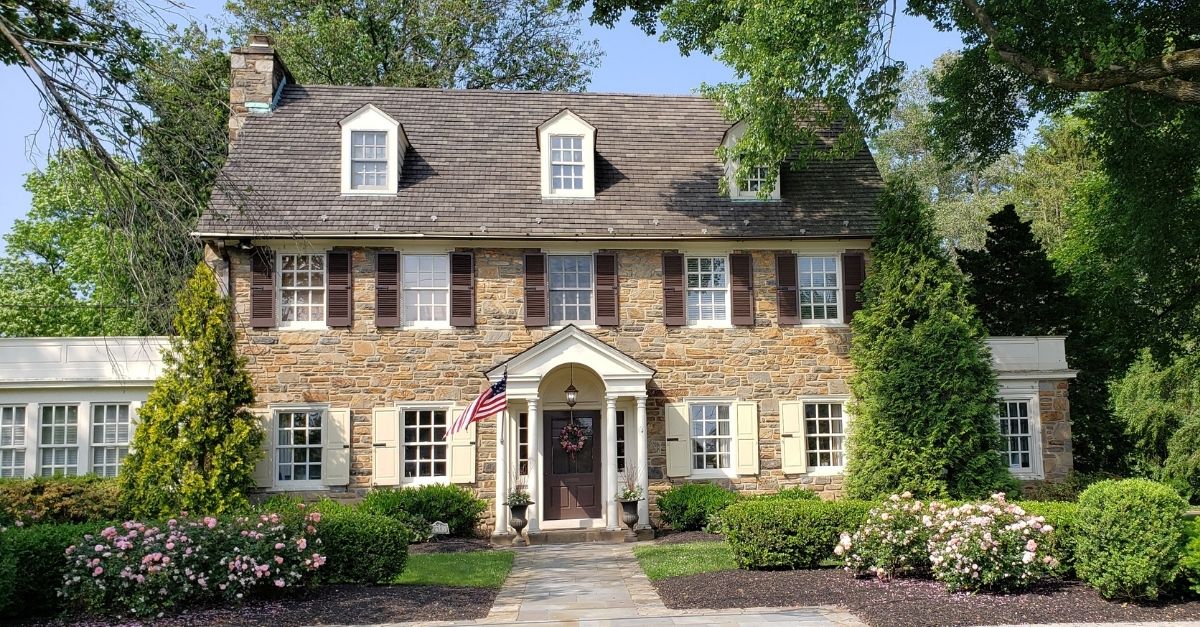
With their hallmark rectangular shape and symmetrical façade, colonial-style houses are one of the most recognizable in the US today. They might also feature a porch or an imposing column-flanked entrance.
Neoclassical houses: The elegant option for history lovers
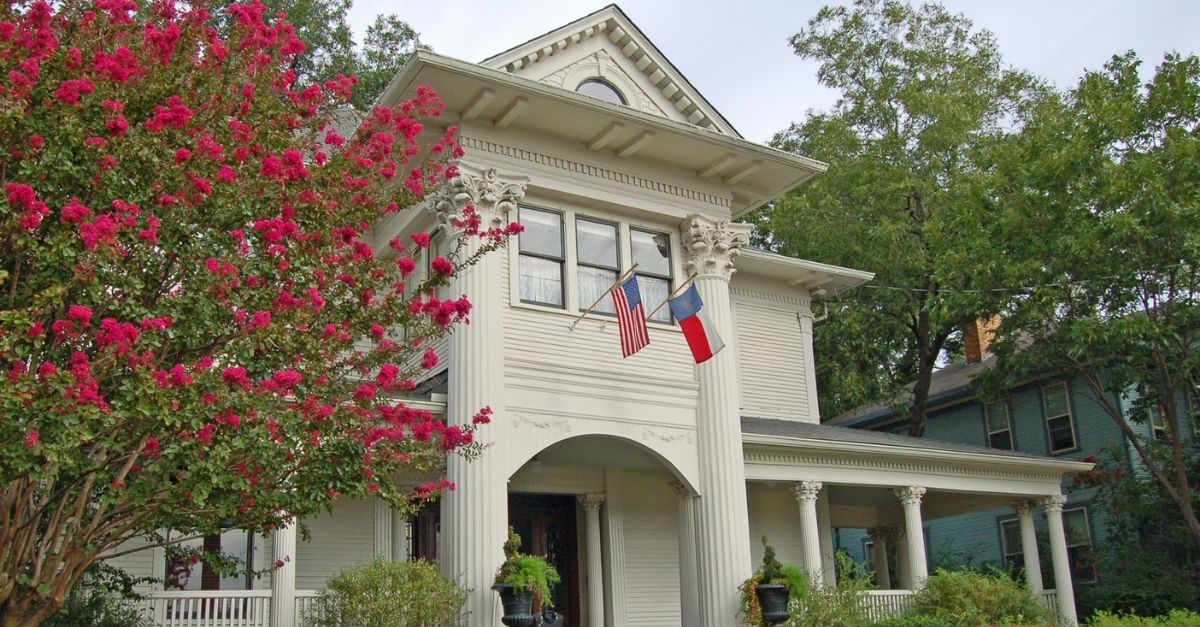
Drawing from the architecture of ancient Greece and Rome, neoclassical houses are distinguished and grand. The White House is the most famous example of a neoclassical house in the US, with its ornamental style and decorative columns. It also follows the traditional neoclassical-style floor plan: a central core with two wings on either side.
Farmhouse-style houses: Rustic chic homes that are built for comfort
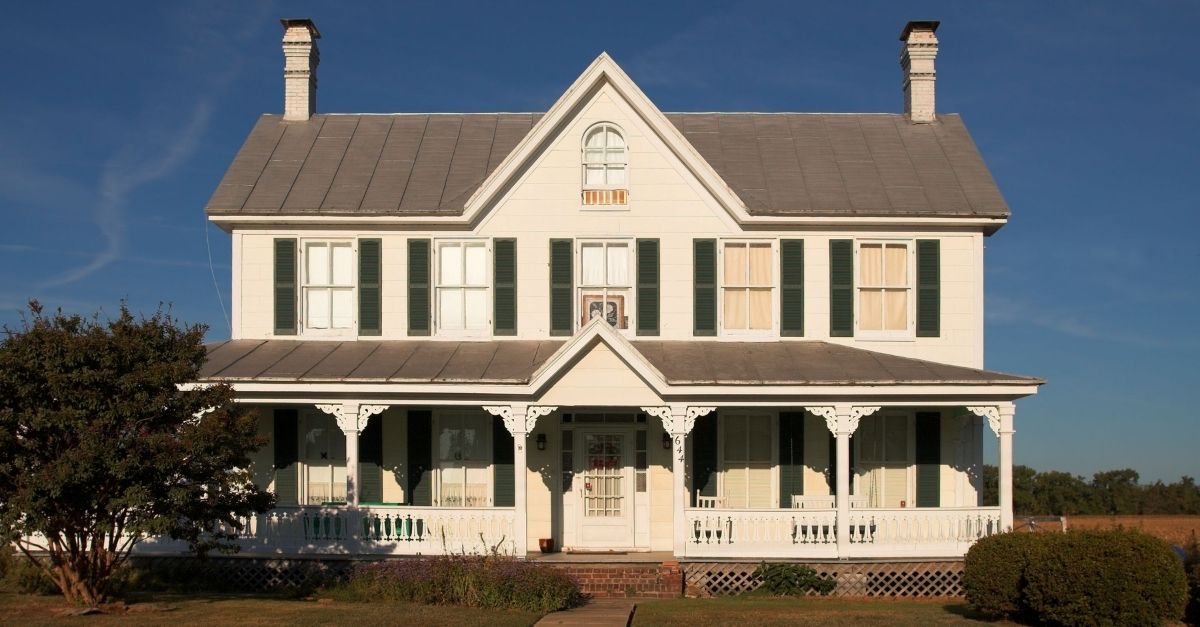
Farmhouse-style properties are all about horizontal space. Bungalows are often built in this style, combining a large veranda with a quaint a-frame or gable roof. The vaulted ceilings are left open to create a feeling of airiness and informality.
French country-style houses: Where comfort meets the French touch
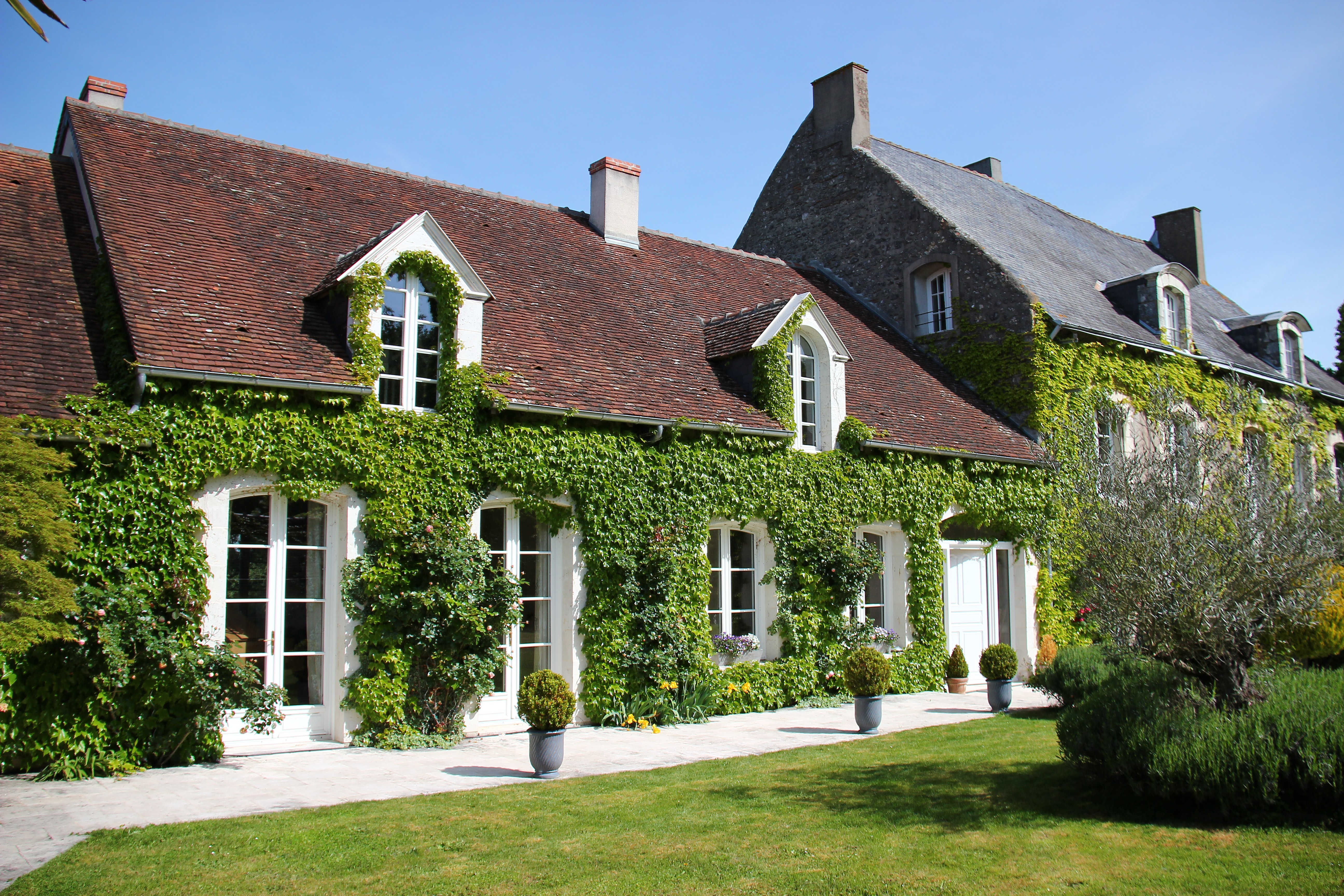
If you are drawn to farmhouse-style properties but wish they offered a bit more finesse, the French country style could be perfect for you. These houses adhere to the rustic-chic aesthetic but with a formal edge and a touch of French flair.
Victorian-style houses: The English classic Americans love
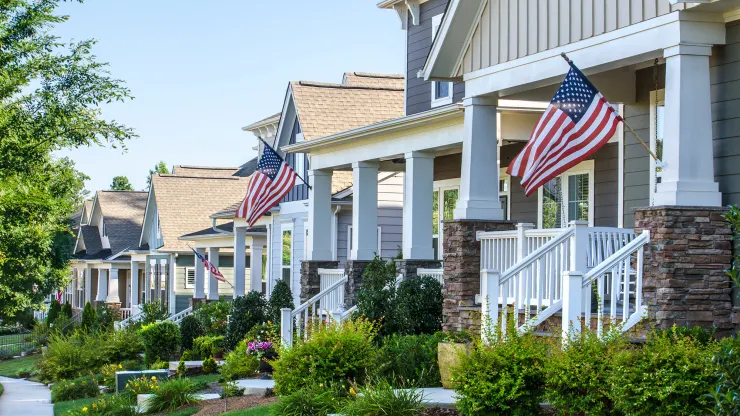
Victorian-style houses are named after the English Queen Victoria. Gothic architecture dominated during her reign, as seen in the intricately patterned woodwork and ornamental turrets that were common for the time. Traditional-style houses sometimes take single elements, such as a turret or bay window, and merge them with another style for decorative effect.
Tudor-style houses: Stately homes that inspire respect
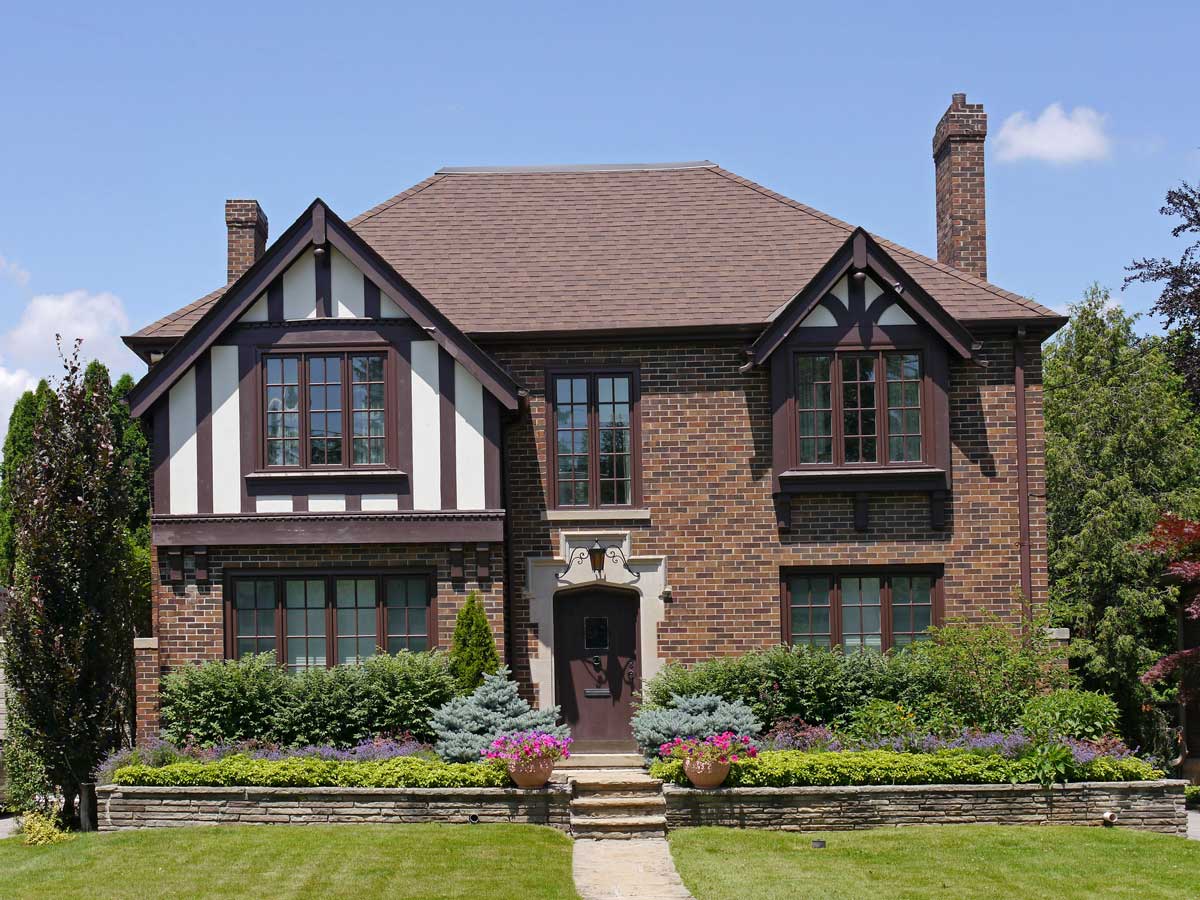
Latticed windows and exposed beams both internally and externally are key features that identify a Tudor-style house. With roots in the Middle Ages, these homes are still popular today, thanks to their historical provenance and cottage-like appearance.
Craftsman-style houses: The choice for quality and craftsmanship
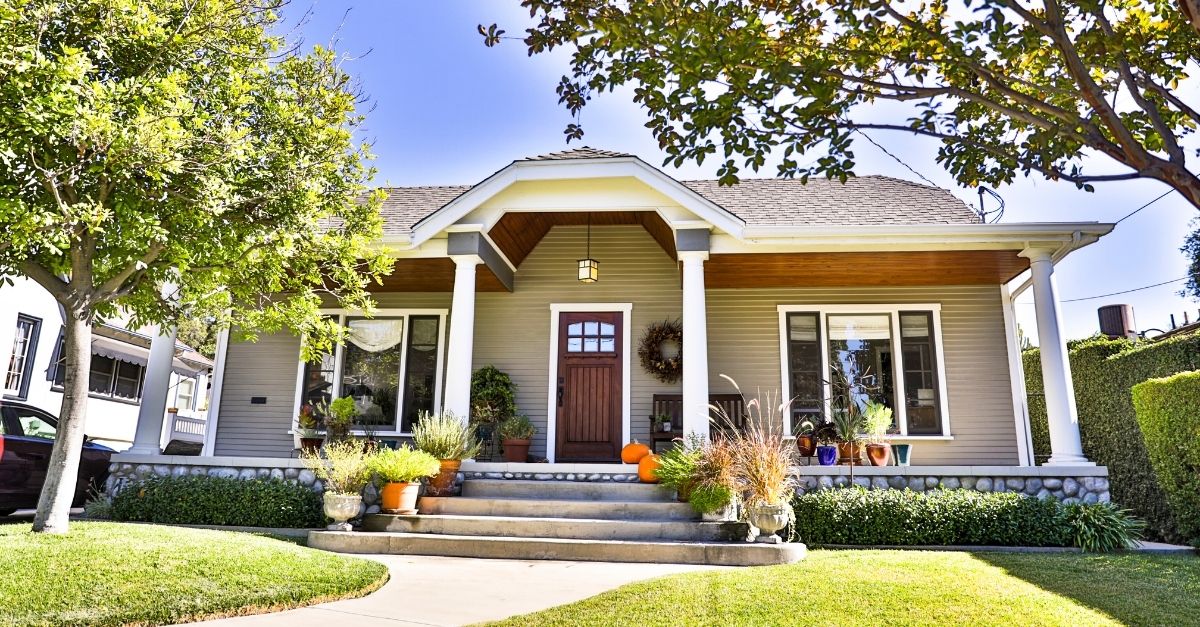
As a countermovement to the Industrial Revolution, the Arts and Crafts movement valued handmade, personalized goods and highly skilled labor using traditional methods. These elements are what inspire craftsman-style houses, which often use wood, stone, and other natural materials in construction, alongside ornate metalwork and picturesque stained-glass windows.
Mediterranean-style houses: Sunshine-inspired with a focus on outdoor living
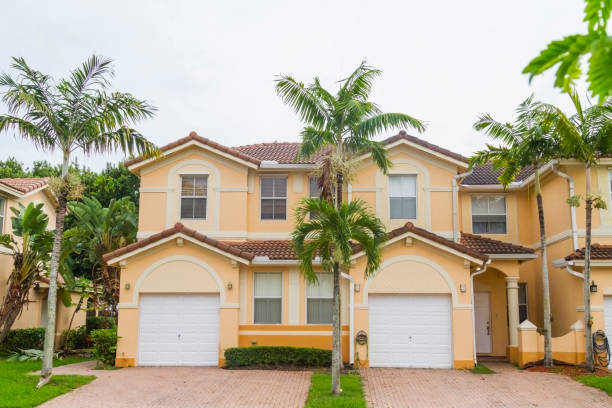
Archways, stucco, and a focus on outdoor living are what separates Mediterranean-style houses from other subtypes of the traditional style. Terracotta tiles also appear often, either on the roof or adorning a hidden courtyard.
Examples of traditional-style houses
Farmhouse in Burton, Texas
- A once-in-a-lifetime opportunity to purchase a stunning legacy farm
- 3 bed | 3.5 bath | 3,514 sqft
- $6,895,000
- See more Traditional-style houses in Texas
Cape Cod-style house in Astoria, Oregon
- A newly renovated Cape Cod-style home featuring a fireplace and outdoor hot tub
- 4 bed | 3 bath | 2,296 sqft
- $749,900
- See more Traditional-style houses in Oregon
Mediterranean-style house in Las Vegas, Nevada
- Follow the sunshine with this beautiful Mediterranean-inspired family home
- 3 bed | 3 bath | 1,792 sqft
- $450,990
- See more Traditional-style houses in Nevada
Craftsman-style house in Burbank, California
- This charming bungalow feels like you’re stepping into the pages of a storybook
- 2 bed | 1 bath | 720 sqft
- $799,000
- See more Traditional-style houses in California
Colonial-style house in Oyster Bay, New York
- A cozy and bright starter home next to a wildlife preserve
- 2 bed | 1 bath | 3,125 sqft
- $492,500
- See more Traditional-style houses in New York
Tudor-style house in Jenkintown, Pennsylvania
- History lovers will jump at the chance to live in this Tudor-inspired home
- 4 bed | 4 bath | 3,000 sqft
- $849,900
- See more Traditional-style houses in Pennsylvania
How to choose a traditional-style house that works for you
Once you’ve decided that a traditional-style house is right for you, there are a few further considerations to bear in mind. As we’ve already covered, traditional-style homes can pull from many different eras and aesthetics, so it’s good to have a clear idea of which styles you’re most drawn to. You’ll also need to have a list of any requirements – for example, if you plan to grow your family in this home, it must have enough bedrooms.
At the same time, having standards that are too high or an inflexible wish list of features might leave you struggling to find the perfect home. Being able to compromise is key during a house search.
Traditional-style houses vs. contemporary houses
Can’t make up your mind whether you want a traditional-style or contemporary house? It’s easy to understand why; both have their own unique benefits and attractions. Contemporary houses might offer unyielding light with their glass walls and creative architecture, but traditional-style houses have a certain charm and sense of homeliness.
If you’re edging in one direction because of a single factor, such as the mod-cons associated with contemporary homes, remember that a lot of these elements can be incorporated into either style of house. For example, a traditional-style home can still feature modern appliances and large windows that fill the space with light.
The bottom line is that it really depends on your taste in aesthetics. Don’t be swayed by the latest design trends – this is a home you’ll enjoy for years to come, so you have to choose what’s right for you.
Finding traditional-style houses
Traditional-style houses are the go-to for American families. Adopting modern convenience while speaking to people’s sense of heritage and continuity, alongside the spectrum of variation and customization available with these properties are key reasons why they’re so popular. Although you find them everywhere, traditional-style homes can still be truly unique.
You can find plenty of traditional-style houses on Flyhomes. Enjoy browsing our selection to find a house that suits your needs and desires.


